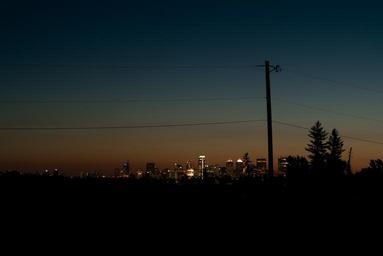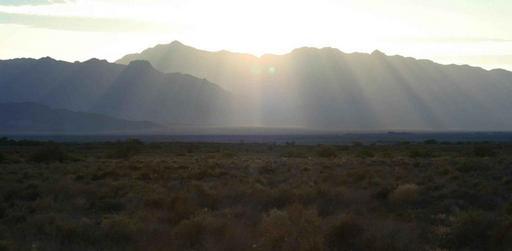Introduction
Self-portrait photography has emerged as a captivating medium that allows individuals to delve into their identities and express themselves artistically. In a world dominated by images, the act of creating self-portraits offers a unique canvas for introspection, creativity, and emotional exploration. From aesthetic photography to faceless portraits, this art form embraces an array of styles and techniques that reflect personal narratives and societal influences. This article will explore the multifaceted nature of self-portrait photography, emphasizing its role in self-expression while investigating various artistic techniques like linocut printing techniques, woodblock printing techniques, and more.
Capturing Identity: Exploring Self-Portrait Photography as a Form of Self-Expression
Capturing identity through self-portrait photography is not just about the physical representation of oneself; it’s an intricate dance between perception and reality. Photographers often grapple with how they wish to be seen versus how they truly feel inside. This duality introduces profound questions about identity in art. Why do we choose certain backgrounds, outfits, or expressions? How do these choices convey our inner thoughts?
The Essence of Self-Portrait Photography
Self-portrait photography serves as an artistic outlet where individuals can manifest their emotions visually. Unlike traditional portraiture, which often involves an external subject, this genre invites introspection and vulnerability. Through various approaches—be it colorful portraits or abstract portraits—photographers capture slices of their existence.
Emotional Reflection in Art
When we look at a self-portrait, what do we see? Often, it’s not just an image but a reflection of emotional states—joy, sadness, confusion, or serenity. The mood conveyed through lighting, composition, and color can transform a simple photograph into a powerful statement about one’s identity.
Diverse Portrait Styles in Self-Portraiture
Self-portrait photography encompasses diverse styles that cater to different artistic expressions. Let's explore some popular portrait styles:
Aesthetic Photography: Focuses on beauty in composition and color. Faceless Portraits: Emphasizes anonymity while communicating deeper emotions. Abstract Portraits: Moves away from realistic representation to evoke feelings through shapes and colors.Each style possesses its own aesthetic qualities that resonate differently with viewers.
Photography Techniques for Self-Portraits
Mastering photography techniques is essential for crafting compelling self-portraits. Here are key techniques every photographer should consider:

- Lighting: Natural light often yields soft shadows and highlights. Composition: Utilizing the rule of thirds can create dynamic images. Camera Angles: Experimenting with angles can dramatically alter the photo's mood.
By honing these skills, photographers can enhance their ability to convey identity through their work.
Exploring Aesthetic Trends in Art
Artistic trends evolve over time and influence how individuals approach self-portraiture. A deeper understanding of these trends can enrich one’s artistic expression.
The Role of Interior Design in Self-Portraiture
Incorporating elements from interior design into photography adds layers to self-portraits. Whether it’s showcasing everyday spaces or using large canvases as backdrops, environment plays a crucial role in setting the tone for self-expression.

Everyday Spaces in Art
Utilizing familiar surroundings allows photographers to create relatable narratives within their portraits. By focusing on common spaces—like kitchens or living rooms—the imagery resonates more deeply https://www.oskuleinonenphotography.com/Contemplative-Photography-And-Empowering-Images with viewers who see fragments of their own lives reflected back at them.
Art Techniques That Enhance Identity Exploration
Employing various art techniques can elevate the storytelling aspect within self-portfolios:
Linocut Printing Techniques Woodblock Printing Techniques Mixed Media ApproachesThese methods invite experimentation beyond traditional photography by merging visual art forms with photographic elements.
Capturing Moments in Photography: The Heartbeat of Self-Portraiture
Every photograph tells a story; every moment captured reflects the essence of identity at that point in time. Understanding how to seize these moments is pivotal for any photographer aiming to express themselves authentically.
Emotional Depth Through Visual Art Forms
Visual art forms extend far beyond mere aesthetics; they embody emotion and narrative depth that resonate profoundly with audiences.
Artistic Choices That Define Us
The choices made during the creative process—from wardrobe selection to background settings—serve not only as practical decisions but also as reflections of personal beliefs and values embedded within one's identity.
Identity in Art: Cultural Contexts and Influence
Cultural backgrounds significantly shape how individuals perceive themselves and express their identities through art—including self-portrait photography.
Global Perspectives on Self-Portraiture
Different cultures have unique approaches toward self-representation:
Western Cultures: Often emphasize individualism. Eastern Cultures: May focus on collective identity. Indigenous Cultures: Highlight community narratives intertwined with personal stories.Understanding these cultural contexts enriches one’s appreciation for diverse expressions found within self-portfolios worldwide.
FAQs
1. What is self-portrait photography?
Self-portrait photography is when an individual captures images of themselves, allowing for deep personal expression and exploration of identity through visual means.
2. How does lighting affect self-portrait photography?
Lighting significantly impacts mood and emotion conveyed in photographs; natural light typically provides softer shadows whereas artificial lighting may create stark contrasts depending on its placement.
3. What are faceless portraits?
Faceless portraits focus on conveying emotion without revealing facial features; these images often utilize creative angles or props to communicate feelings indirectly while maintaining anonymity.
4. How do cultural contexts influence self-expression in art?
Cultural contexts shape individual experiences which reflect upon artistic choices made during the creation process; different societies may prioritize aspects like individuality or community bonds differently manifested through visual arts including portraiture.
5. Why are aesthetic trends important for artists?
Aesthetic trends provide insight into current tastes within society while encouraging artists’ growth by challenging them to adapt elements from contemporary styles into their works enhancing relevance amongst audiences over time.
6. Can interior design impact my self-portraits?
Absolutely! Incorporating elements from interior design into your compositions creates relatable narratives highlighting everyday spaces thus enriching emotional resonance with viewers who see commonalities reflected back at them!
Conclusion
In conclusion, capturing identity through self-portrait photography serves as an invaluable channel for personal expression and exploration amidst our complex world today! By embracing various portrait styles—from aesthetic choices influenced by current trends—to innovative art techniques such as linocut printing or woodblock engraving—all contribute towards cultivating rich narratives reflecting individual identities showcased beautifully across multiple platforms! As we navigate this artistic journey together let us celebrate each other's uniqueness while encouraging further discovery beyond conventional boundaries redefining what it means truly “to capture” oneself creatively!